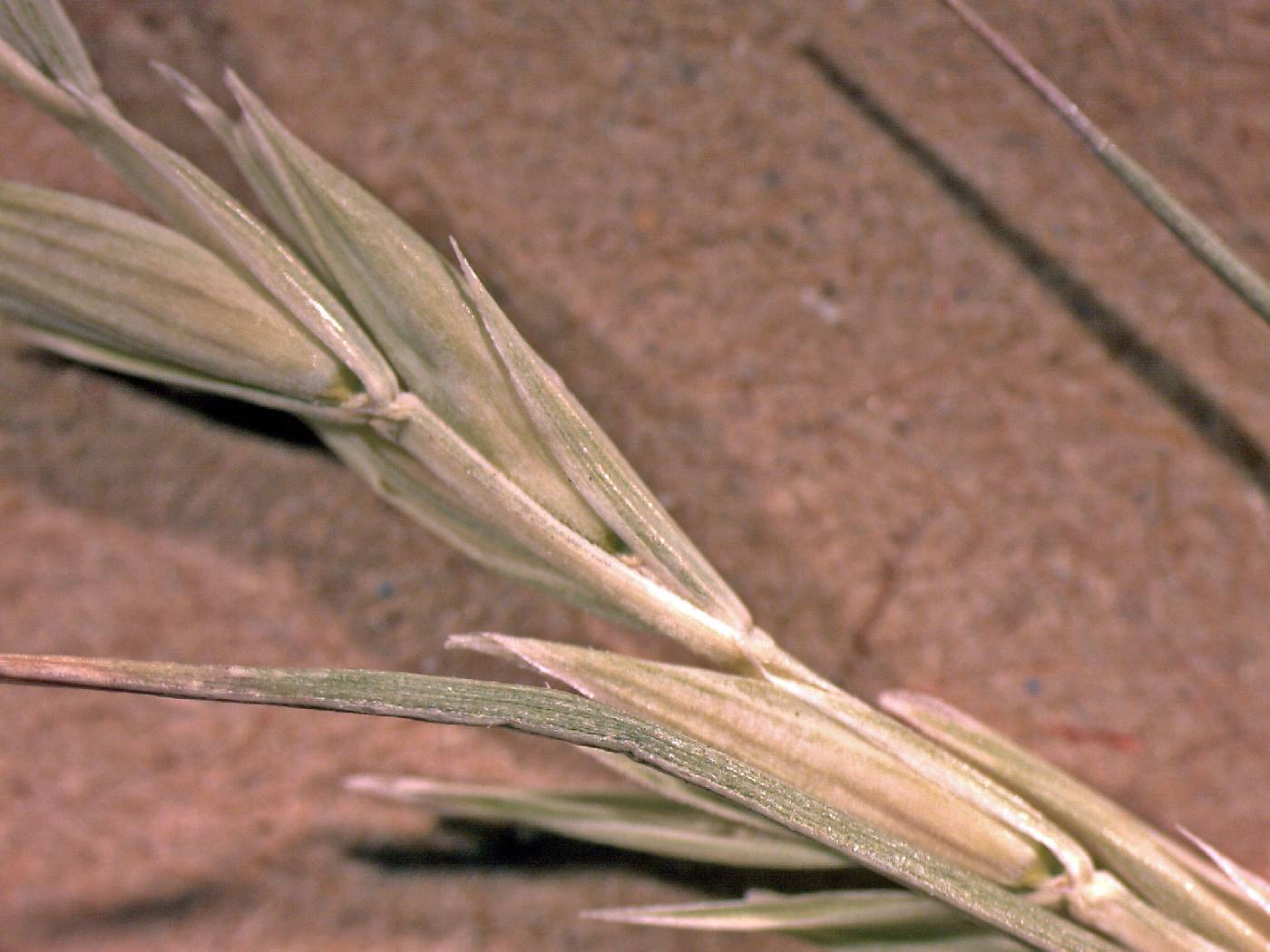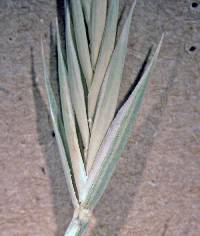|
|
|
|
Family: Poaceae
Great Lakes wheatgrass, more...Great Lakes wheatgrass, thickspike wheatgrass
[Agropyron dasystachyum (Hook.) Scribn., moreAgropyron dasystachyum var. psammophilum (J.M.Gillett & Senn) Voss, Agropyron dasystachyum var. riparium (Scribn. & J.G.Sm.) Bowden, Agropyron elmeri Scribn., Agropyron lanceolatum Scribn. & J.G.Sm., Agropyron psammophilum J.M.Gillett & Senn, Agropyron riparium Scribn. & J.G.Sm., Elymus lanceolatus subsp. psammophilus (J.M.Gillett & Senn) Á.Löve, Elymus lanceolatus var. riparius (Scribn. & J.G.Sm.) Dorn, Elymus subvillosus (Hook.) Gould, Elytrigia dasystachya (Hook.) Á.Löve & D.Löve, Elytrigia dasystachya subsp. psammophila (J.M.Gillett & Senn) D.R.Dewey, Elytrigia dasystachya var. psammophila (J.M.Gillett & Senn) A.Cronquist, Elytrigia riparia (Scribn. & J.G.Sm.) Beetle] |
Plants strongly rhizomatous, sometimes glaucous. Culms 22-130 cm, erect; nodes glabrous. Leaves often mostly basal, sometimes more evenly distributed; sheaths glabrous or pubescent; auricles usually present on the lower leaves, 0.5-1.5 mm; ligules 0.1-0.5 mm, erose, sometimes ciliolate; blades 1.5-6 mm wide, generally involute, abaxial surfaces usually glabrous, adaxial surfaces strigose, ribs subequal in size and spacing. Spikes 3.5-26 cm long, 0.5-1 cm wide, erect to slightly nodding, usually with 1 spikelet per node, sometimes with 2 at a few nodes; internodes 3.5-15 mm long, 0.1-0.8 mm wide, glabrous or hairy. Spikelets 8-31 mm, 1.5-3 times longer than the internodes, appressed, with 3-11 florets; rachillas glabrous or hairy, hairs to 1 mm; disarticulation above the glumes, beneath each floret. Glumes subequal, 5-14 mm long, 1/2-3/4 the length of the adjacent lemmas, 0.7-1.3 mm wide, lanceolate, glabrous or hairy, smooth or scabrous, 3-5-veined, flat or weakly, often asymmetrically keeled, keels straight, margins narrow, tapering from the base or from beyond midlength, apices acute to acuminate, sometimes mucronate or shortly awned; lemmas 7-12 mm, glabrous or hairy, hairs all alike, sometimes scabrous, acute to awn-tipped, awns to 2 mm, straight; paleas about equal to the lemmas, keels straight below the apices, proximally smooth or scabrous, sometimes hairy, scabrous distally, intercostal region glabrous or with hairs, apices 0.2-0.3 mm wide; anthers (2.5)3-6 mm. 2n = 28. Elymus lanceolatus grows in sand and clay soils and dry to mesic habitats. It is restricted to Canada and the contiguous United States , growing primarily between the coastal mountains and 95- W longitude, with the exception of E. lanceolatus subsp. psammophilus , which extends around the Great Lakes. Three subspecies are recognized, primarily on the basis of their lemma and palea pubescence. Elymus lanceolatus is primarily outcrossing, and hybridizes with several species of Triticeae . Elymus albicans -is thought to be derived from hybridization with the awned phase of Pseudoroegneria spicata . Judging from specimens of controlled hybrids, hybridization with E. trachycaulus -and unawned plants of Pseudoroegneria spicata probably occur, but would be almost impossible to detect without careful observation in the field. Experimental hybrids are partially fertile, and capable of backcrossing to either parent (Dewey 1965, 1967, 1968, 1975, 1976). Strongly rhizomatous, usually glaucous, 3-9 dm; lvs involute or sometimes flat, 1-3.5(-5) mm wide, firm, glabrous to scaberulous or sometimes pilose; spikes stiff, erect, 6-25 cm, the middle internodes 7-12+ mm; spikelets 11-20+ mm, mostly 3-7-fld, sometimes some of them in pairs; glumes in var. dasystachya lance-oblong, acute to acuminate, broadest at or above midlength, usually more than half as long as the lemmas; in var. psammophila more slender and attenuate, approaching the form of E. smithii, to half as long as the lemmas; lemmas 7-10 mm, acute, sometimes shortly awn-tipped, densely villous, or in var. dasystachya sometimes merely scabrous; anthers (3.5-)4-5 mm; 2n=28. (Agropyron d.; Elymus lanceolatus) Var. dasystachya is widespread in the w. cordilleran region and on the n. Great Plains, and casually intr. eastward; var. psammophila (J. M. Gillett & H. Senn) Cronquist occurs on sand dunes along lakes Michigan and Huron in Ont., Mich., Ill., and Wis., disjunct from the natural range of var. dasystachya. Gleason, Henry A. & Cronquist, Arthur J. 1991. Manual of vascular plants of northeastern United States and adjacent Canada. lxxv + 910 pp. ©The New York Botanical Garden. All rights reserved. Used by permission. |



